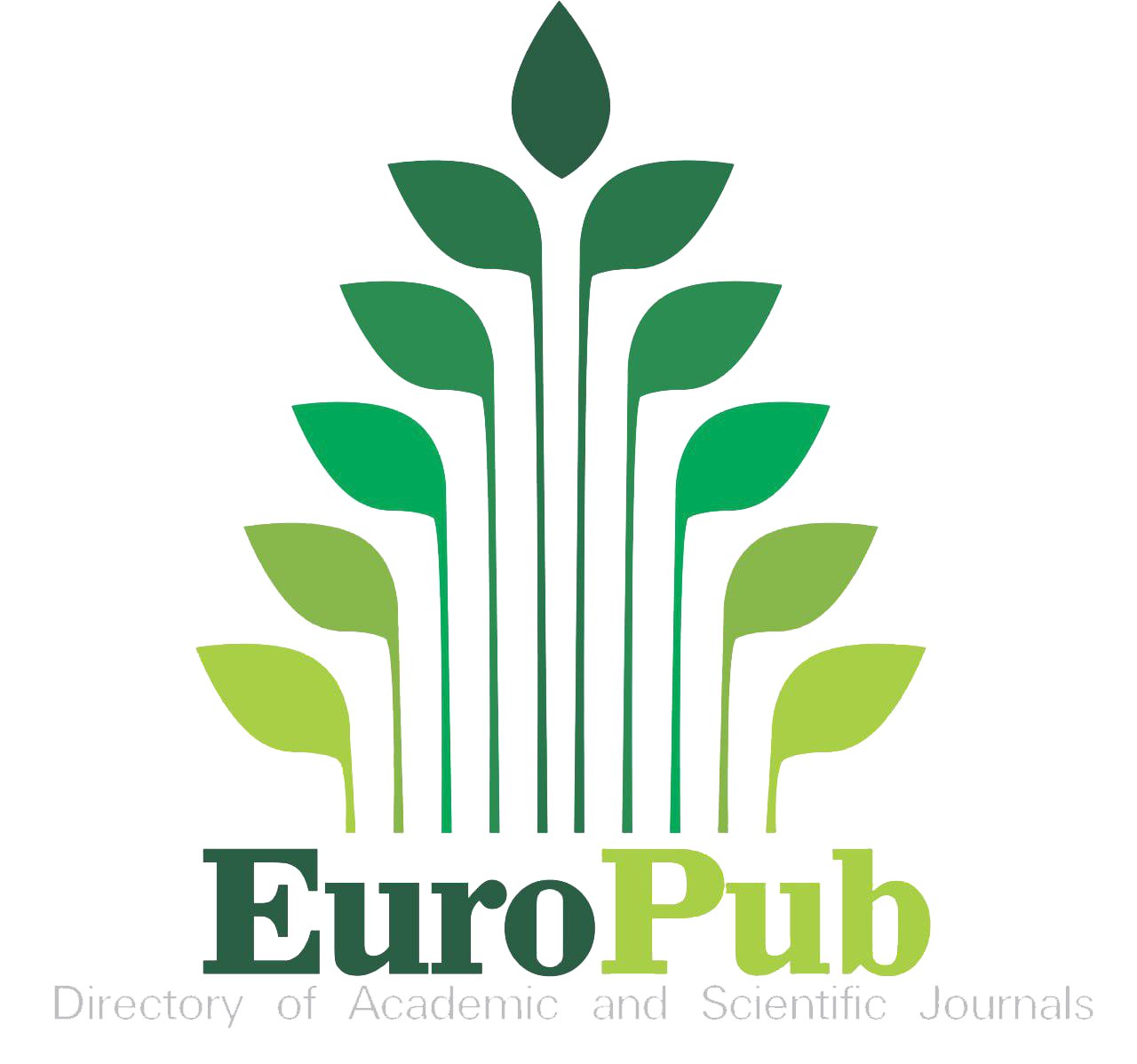Abstract
This study seeks to provide a comprehensive overview of the latest progress in the antioxidant properties of nanoparticles. Nanoparticles (NPs) have emerged as a promising tool in several domains of science and industry, including their application as antioxidant agents. The main knowledge gaps seem to be in correctly identifying the make-up of the naturally occurring phytochemicals that give these nano-antioxidants their extraordinary pharmacology and drug-like properties. In many instances, that characterization is done using spectroscopy instrumentation such as fourier-transform Infrared (FT-IR), scanning electron microscope (SEM), and X-ray diffraction analysis (XRD). From literature appraisals, it was discovered that a lot of authors didn’t properly characterize the phytochemicals—flavonoids, phenolics, or other phytochemicals in the plant extracts in the case of green synthesis, which bond with the metallic components. Due to the lack of proper isolation of phytochemicals in the plants, it is also uncertain if the increased activities registered for the nanoantioxidants are the result of one or numerous phytochemicals creating unique nano-moieties. Most often, plant extracts of the same species vary significantly in their chemical composition, and therefore making it challenging to replicate the research findings. In conclusion, there is an inadequate understanding of the long-term consequences of nanoparticles on human health, and some studies have raised concerns about their safety versus potential toxicity. Therefore, further studies on the toxicity of nanoantioxidants are necessary.
Recommended Citation
Ibrahim, Sulyman Olalekan; Lukman, Halimat Yusuf; Abdulkadir, Fatimat Ronke; Bello, Monsurat Yemisi; Ayipo, Yusuf Oloruntoyin; Babamale, Halimah Funmilayo; Zubair, Marili Funmilayo; and Atolani, Olubunmi
(2024)
"Nanoparticles as Antioxidant Agents: A Comprehensive Review,"
Al-Bahir: Vol. 5:
Iss.
1, Article 3.
Available at: https://doi.org/10.55810/2313-0083.1066
References
[1] Patel JK, Patel A, Bhatia D. Introduction to nanomaterials and nanotechnology. Emerging technologies for nanoparticle manufacturing. Springer; 2021. p. 3-23.
[2] Khan FA. Nanomaterials: types, classifications, and sources. In: Applications of nanomaterials in human health; 2020. p. 1-13.
[3] Trotta F, Mele A. Nanomaterials: classification and properties. In: Nanosponges: Synthesis and applications; 2019. p. 1-26.
[4] Khan Y, Sadia H, Ali Shah SZ, Khan MN, Shah AA, Ullah N, et al. Classification, synthetic, and characterization approaches to nanoparticles, and their applications in various fields of nanotechnology: a review. Catalysts 2022; 12(11):1386.
[5] Valgimigli L, Baschieri A, Amorati R. Antioxidant activity of nanomaterials. J Mater Chem B 2018;6(14): 2036-51.
[6] Samrot AV, Ram Singh SP, Deenadhayalan R, Rajesh VV, Padmanaban S, Radhakrishnan K. Nanoparticles, a doubleedged sword with oxidant as well as antioxidant propertiesda review. Oxygen 2022;2(4):591-604.
[7] Fazal H, Abbasi BH, Ahmad N, Ali M. Elicitation of medicinally important antioxidant secondary metabolites with silver and gold nanoparticles in callus cultures of Prunella vulgaris L. Appl Biochem Biotechnol 2016;180: 1076-92.
[8] Aboulthana WMK, Refaat E, Khaled SE, Ibrahim NE-S, Youssef AM. Metabolite profiling and biological activity assessment of Casuarina equisetifolia bark after incorporating gold nanoparticles. Asian Pac J Cancer Prev APJCP 2022;23(10):3457.
[9] Abdal Dayem A, Hossain MK, Lee SB, Kim K, Saha SK, Yang G-M, et al. The role of reactive oxygen species (ROS) in the biological activities of metallic nanoparticles. Int J Mol Sci 2017;18(1):120.
[10] Casals G, Perram_on M, Casals E, Portol_es I, Fern_andez- Varo G, Morales-Ruiz M, et al. Cerium oxide nanoparticles: a new therapeutic tool in liver diseases. Antioxidants 2021; 10(5):660.
[11] Saifi MA, Seal S, Godugu C. Nanoceria, the versatile nanoparticles: promising biomedical applications. J Contr Release 2021;338:164-89.
[12] Ashok A, Andrabi SS, Mansoor S, Kuang Y, Kwon BK, Labhasetwar V. Antioxidant therapy in oxidative stressinduced neurodegenerative diseases: role of nanoparticlebased drug delivery systems in clinical translation. Antioxidants 2022;11(2):408.
[13] Demirci-Cekic S, € Ozkan G, Avan AN, Uzunboy S, Çapano_glu E, Apak R. Biomarkers of oxidative stress and antioxidant defense. J Pharmaceut Biomed Anal 2022;209: 114477.
[14] Fatemi H, Esmaiel Pour B, Rizwan M. Foliar application of silicon nanoparticles affected the growth, vitamin C, flavonoid, and antioxidant enzyme activities of coriander (Coriandrum sativum L.) plants grown in lead (Pb)-spiked soil. Environ Sci Pollut Control Ser 2021;28:1417-25.
[15] Offord EA, Gautier J-C, Avanti O, Scaletta C, Runge F, Kr€amer K, et al. Photoprotective potential of lycopene, bcarotene, vitamin E, vitamin C and carnosic acid in UVAAL irradiated human skin fibroblasts. Free Radic Biol Med 2002;32(12):1293-303.
[16] Sanjay SS, Shukla AK. Potential therapeutic applications of nano-antioxidants. Springer; 2021.
[17] Khalil I, Yehye WA, Etxeberria AE, Alhadi AA, Dezfooli SM, Julkapli NBM, et al. Nanoantioxidants: recent trends in antioxidant delivery applications. Antioxidants 2019;9(1):24.
[18] Flieger J, Flieger W, Baj J, Maciejewski R. Antioxidants: classification, natural sources, activity/capacity measurements, and usefulness for the synthesis of nanoparticles. Materials 2021;14(15):4135.
[19] Pisoschi AM, Pop A, Iordache F, Stanca L, Predoi G, Serban AI. Oxidative stress mitigation by antioxidants-an overview on their chemistry and influences on health status. Eur J Med Chem 2021;209:112891.
[20] Rahal A, Kumar A, Singh V, Yadav B, Tiwari R, Chakraborty S, et al. Oxidative stress, prooxidants, and antioxidants: the interplay. BioMed Res Int 2014;2014.
[21] He L, He T, Farrar S, Ji L, Liu T, Ma X. Antioxidants maintain cellular redox homeostasis by elimination of reactive oxygen species. Cell Physiol Biochem 2017;44(2): 532-53.
[22] Tan BL, Norhaizan ME, Liew W-P-P, Sulaiman Rahman H. Antioxidant and oxidative stress: a mutual interplay in agerelated diseases. Front Pharmacol 2018;9:402374.
[23] Fragou F, Theofanous A, Deligiannakis Y, Louloudi M. Nanoantioxidant materials: nanoengineering inspired by nature. Micromachines 2023;14(2):383.
[24] Omran B, Baek K-H. Nanoantioxidants: pioneer types, advantages, limitations, and future insights. Molecules 2021; 26(22):7031.
[25] Shah ST, Chowdhury ZZ, Simarani K, Basirun WJ, Badruddin IA, Hussien M, et al. Nanoantioxidants: the fourth generation of antioxidantsdrecent research roadmap and future perspectives. Coatings 2022;12(10):1568.
[26] Sandhir R, Yadav A, Sunkaria A, Singhal N. Nano-antioxidants: an emerging strategy for intervention against neurodegenerative conditions. Neurochem Int 2015;89: 209-26.
[27] Arriagada F, Günther G, Morales J. Nanoantioxidantebased silica particles as flavonoid carrier for drug delivery applications. Pharmaceutics 2020;12(4):302.
[28] Martinelli C, Pucci C, Battaglini M, Marino A, Ciofani G. Antioxidants and nanotechnology: promises and limits of potentially disruptive approaches in the treatment of central nervous system diseases. Adv Healthcare Mater 2020; 9(3):1901589.
[29] Mu J, Li C, Shi Y, Liu G, Zou J, Zhang D-Y, et al. Protective effect of platinum nano-antioxidant and nitric oxide against hepatic ischemia-reperfusion injury. Nat Commun 2022; 13(1):2513.
[30] Harish V, Tewari D, Gaur M, Yadav AB, Swaroop S, Bechelany M, et al. Review on nanoparticles and nanostructured materials: bioimaging, biosensing, drug delivery, tissue engineering, antimicrobial, and agro-food applications. Nanomaterials 2022;12(3):457.
[31] Griffin S, Masood MI, Nasim MJ, Sarfraz M, Ebokaiwe AP, Sch€afer K-H, et al. Natural nanoparticles: a particular matter inspired by nature. Antioxidants 2017;7(1):3.
[32] Watal G, Watal A, Rai PK, Rai DK, Sharma G, Sharma B. Biomedical applications of nano-antioxidant. Oxidat Str Nanotechnol Meth Protocol 2013:147-51.
[33] Pezzini I, Marino A, Del Turco S, Nesti C, Doccini S, Cappello V, et al. Cerium oxide nanoparticles: the regenerative redox machine in bioenergetic imbalance. Nanomedicine 2017;12(4):403-16.
[34] Chakraborty A, Jana NR. Vitamin C-conjugated nanoparticle protects cells from oxidative stress at low doses but induces oxidative stress and cell death at high doses. ACS Appl Mater Interfaces 2017;9(48):41807-17.
[35] Losada-Barreiro S, Sezgin-Bayindir Z, Paiva-Martins F, Bravo-Díaz C. Biochemistry of antioxidants: mechanisms and pharmaceutical applications. Biomedicines 2022;10(12): 3051.
[36] Liu C, Gui L, Zheng J-J, Xu Y-Q, Song B, Yi L, et al. Intrinsic strain-mediated ultrathin ceria nanoantioxidant. J Am Chem Soc 2023;145(34):19086-97.
[37] Squillaro T, Cimini A, Peluso G, Giordano A, Melone MAB. Nano-delivery systems for encapsulation of dietary polyphenols: an experimental approach for neurodegenerative diseases and brain tumors. Biochem Pharmacol 2018;154: 303-17.
[38] Sharpe E, Andreescu D, Andreescu S. Artificial nanoparticle antioxidants. In: Oxidative stress: diagnostics, prevention, and therapy. ACS Publications; 2011. p. 235-53.
39] Bhattacherjee A, Dhara K, Chakraborti AS. Argpyrimidinetagged rutin-encapsulated biocompatible (ethylene glycol dimers) nanoparticles: synthesis, characterization and evaluation for targeted drug delivery. Int J Pharm 2016; 509(1-2):507-17.
[40] Shah ST, Yehye WA, Saad O, Simarani K, Chowdhury ZZ, Alhadi AA, et al. Surface functionalization of iron oxide nanoparticles with gallic acid as potential antioxidant and antimicrobial agents. Nanomaterials 2017;7(10):306.
[41] Viglianisi C, Di Pilla V, Menichetti S, Rotello VM, Candiani G, Malloggi C, et al. Linking an a-Tocopherol derivative to Cobalt (0) nanomagnets: magnetically responsive antioxidants with superior radical trapping activity and reduced cytotoxicity. Chem–Eur J 2014;20(23): 6857-60.
[42] Liberman A, Mendez N, Trogler WC, Kummel AC. Synthesis and surface functionalization of silica nanoparticles for nanomedicine. Surf Sci Rep 2014;69(2-3):132-58.
[43] Arriagada F, Correa O, Günther G, Nonell S, Mura F, Olea- Azar C, et al. Morin flavonoid adsorbed on mesoporous silica, a novel antioxidant nanomaterial. PLoS One 2016; 11(11):e0164507.
[44] Vilas V, Philip D, Mathew J. Biosynthesis of Au and Au/Ag alloy nanoparticles using Coleus aromaticus essential oil and evaluation of their catalytic, antibacterial and antiradical activities. J Mol Liq 2016;221:179-89.
[45] Du L, Suo S, Wang G, Jia H, Liu KJ, Zhao B, et al. Mechanism and cellular kinetic studies of the enhancement of antioxidant activity by using surface-functionalized gold nanoparticles. Chem–Eur J 2013;19(4):1281-7.
[46] Medhe S, Bansal P, Srivastava MM. Enhanced antioxidant activity of gold nanoparticle embedded 3, 6-dihydroxyflavone: a combinational study. Appl Nanosci 2014;4: 153-61.
[47] Kalaiyarasan T, Bharti VK, Chaurasia O. Retracted Article: one pot green preparation of Seabuckthorn silver nanoparticles (SBT@ AgNPs) featuring high stability and longevity, antibacterial, antioxidant potential: a nano disinfectant future perspective. RSC Adv 2017;7(81): 51130-41.
[48] Teerasong S, Jinnarak A, Chaneam S, Wilairat P, Nacapricha D. Poly (vinyl alcohol) capped silver nanoparticles for antioxidant assay based on seed-mediated nanoparticle growth. Talanta 2017;170:193-8.
[49] Marulasiddeshwara M, Dakshayani S, Kumar MS, Chethana R, Kumar PR, Devaraja S. Facile-one pot-green synthesis, antibacterial, antifungal, antioxidant and antiplatelet activities of lignin capped silver nanoparticles: a promising therapeutic agent.Mater Sci EngC2017;81:182-90.
[50] Sriranjani R, Srinithya B, Vellingiri V, Brindha P, Anthony SP, Sivasubramanian A, et al. Silver nanoparticle synthesis using Clerodendrum phlomidis leaf extract and preliminary investigation of its antioxidant and anticancer activities. J Mol Liq 2016;220:926-30.
[51] Vaiserman A, Koliada A, Zayachkivska A, Lushchak O. Nanodelivery of natural antioxidants: an anti-aging perspective. Front Bioeng Biotechnol 2020;7:447.
[52] Patil VM, Masand N. Anticancer potential of flavonoids: chemistry, biological activities, and future perspectives. Stud Nat Prod Chem 2018;59:401-30.
[53] Slika H, Mansour H, Wehbe N, Nasser SA, Iratni R, Nasrallah G, et al. Therapeutic potential of flavonoids in cancer: ROS-mediated mechanisms. Biomed Pharmacother 2022;146:112442.
[54] Gupta M, Ahmad J, Ahamad J, Kundu S, Goel A, Mishra A. Flavonoids as promising anticancer therapeutics: contemporary research, nanoantioxidant potential, and future scope. Phytother Res 2023;37(11):5159-92.
[55] Djamila B, Eddine LS, Abderrhmane B, Nassiba A, Barhoum A. In vitro antioxidant activities of copper mixed oxide (CuO/Cu2O) nanoparticles produced from the leaves of Phoenix dactylifera L. Biomass Convers Bioref 2022:1-14.
[56] Abdellatif A, Mohammed H, Abdulla M, Alsubaiyel A, Mahmood A, Samman W, et al. Green synthesized silver nanoparticles using the plant-based reducing agent Matricaria chamomilla induce cell death in colorectal cancer cells. Eur Rev Med Pharmacol Sci 2023;27(20).
[57] Aguilar CAH, Jim_enez ABP, Silva AR, Kaur N, Thangarasu P, Ramos JMV, et al. Organic-inorganic hybrid nanoparticles for bacterial inhibition: synthesis and characterization of doped and undoped ONPs with Ag/Au NPs. Molecules 2015;20(4):6002-21.
[58] Zhang X, Guo X, Kang X, Yang H, Guo W, Guan L, et al. Surface functionalization of pegylated gold nanoparticles with antioxidants suppresses nanoparticle-induced oxidative stress and neurotoxicity. Chem Res Toxicol 2020;33(5): 1195-205.
[59] Chen Q, Nan Y, Yang Y, Xiao Z, Liu M, Huang J, et al. Nanodrugs alleviate acute kidney injury: manipulate RONS at kidney. Bioact Mater 2023;22:141-67.
[60] Zheng Y, Du M, Shi H, Liu W, Zhuang C, Chen H, et al. A reactive oxygen/nitrogen species-eliminating natural product-based nanomedicine for prevention and treatment of inflammatory liver injury. Chem Eng J 2023;472:144952.
[61] Martemucci G, Portincasa P, Centonze V, Mariano M, Khalil M, D'Alessandro AG. Prevention of oxidative stress and diseases by antioxidant supplementation. Med Chem 2023;19(6):509-37.
[62] Martemucci G, Portincasa P, Di Ciaula A, Mariano M, Centonze V, D'Alessandro AG. Oxidative stress, aging, antioxidant supplementation and their impact on human health: an overview. Mech Ageing Develop 2022;206:111707.
[63] Chen B-H, Stephen Inbaraj B. Various physicochemical and surface properties controlling the bioactivity of cerium oxide nanoparticles. Crit Rev Biotechnol 2018;38(7): 1003-24.
[64] Salatin S, Farhoudi M, Farjami A, Maleki Dizaj S, Sharifi S, Shahi S. Nanoparticle formulations of antioxidants for the management of oxidative stress in stroke: a review. Biomedicines 2023;11(11):3010.
[65] Abagana AY, Zhao M, Alshahrani MY, Rehman KU, Andleeb S, Wang J, et al. Hydrogen iron oxide from an Acinetobacter strain exhibiting intrinsic peroxidase-like activity and its catalytic mechanism and applications. Biomass Convers Bioref 2022:1-10.
[66] Zhao D, Tang Y, Suo X, Zhang C, Dou Y, Chang J. A dualtargeted multifunctional nanoformulation for potential prevention and therapy of Alzheimer's disease. Innovation 2021;2(4).
[67] Mostafa H, Airouyuwa JO, Maqsood S. A novel strategy for producing nano-particles from date seeds and enhancing their phenolic content and antioxidant properties using ultrasound-assisted extraction: a multivariate based optimization study. Ultrason Sonochem 2022;87:106017.
[68] Pirsa S, Farshchi E, Roufegarinejad L. Antioxidant/antimicrobial film based on carboxymethyl cellulose/gelatin/TiO 2-Ag nano-composite. J Polym Environ 2020;28:3154-63.
[69] Kwon Y-S, Voinov MA, Zheng M, Smirnov AI, Han Z. Dark matter: developing a new nanoantioxidant-based therapeutic system for the treatment of age-related macular degeneration. Nano Today 2023;50:101879.
[70] Ramos M, Jim_enez A, Peltzer M, Garrig_os MC. Development of novel nano-biocomposite antioxidant films based on poly (lactic acid) and thymol for active packaging. Food Chem 2014;162:149-55.
[71] Fakhri S, Shakeryan S, Alizadeh A, Shahryari A. Effect of 6 weeks of high intensity interval training with nano curcumin supplement on antioxidant defense and lipid peroxidation in overweight girls-clinical trial. Iran J Diab Obes 2020;11:173-80.
[72] Shi L, Xun W, Yue W, Zhang C, Ren Y, Shi L, et al. Effect of sodium selenite, Se-yeast and nano-elemental selenium on growth performance, Se concentration and antioxidant status in growing male goats. Small Rumin Res 2011;96(1): 49-52.
[73] Shen X, Song C, Wu T. Effects of nano-copper on antioxidant function in copper-deprived Guizhou black goats. Biol Trace Elem Res 2021;199:2201-7.
[74] Li H, Zhou Q, Wu Y, Fu J, Wang T, Jiang G. Effects of waterborne nano-iron on medaka (Oryzias latipes): antioxidant enzymatic activity, lipid peroxidation and histopathology. Ecotoxicol Environ Saf 2009;72(3):684-92.
[75] Yang L, Huang H, Wang T, Zhou D, Chen Q, Li D, et al. Endoplasmic reticulum-targetable selenium-doped carbon nanodots with redox-responsive fluorescence for in situ free-radical scavenging in cells and mice. Arab J Chem 2023;16(9):105036.
[76] Du L, Wang B, Zhang X, Zhao Y, Liu Y. Enhanced antioxidants activity of antioxidants through surface self-assembly approach. Free Radic Biol Med 2018;120:S147.
[77] Martakov IS, Shevchenko OG, Torlopov MA, Sitnikov PA. Colloidally stable conjugates of phenolic acids with g- AlOOH nanoparticles as efficient and biocompatible nanoantioxidants. J Mol Struct 2022;1248:131471.
[78] Saravanakumar K, Sathiyaseelan A, Mariadoss AVA, Wang M-H. Antioxidant and antidiabetic properties of biocompatible ceria oxide (CeO2) nanoparticles in mouse fibroblast NIH3T3 and insulin resistant HepG2 cells. Ceram Int 2021;47(6):8618-26.
[79] Dutta D, Mukherjee R, Patra M, Banik M, Dasgupta R, Mukherjee M, et al. Green synthesized cerium oxide nanoparticle: a prospective drug against oxidative harm. Colloids Surf B Biointerfaces 2016;147:45-53.
[80] Kim S-J, Chung BH. Antioxidant activity of levan coated cerium oxide nanoparticles. Carbohydr Polym 2016;150: 400-7.
[81] Nelson BC, Johnson ME, Walker ML, Riley KR, Sims CM. Antioxidant cerium oxide nanoparticles in biology and medicine. Antioxidants 2016;5(2):15.
[82] Matter MT, Furer LA, Starsich FH, Fortunato G, Pratsinis SE, Herrmann IK. Engineering the bioactivity of flame-made ceria and ceria/bioglass hybrid nanoparticles. ACS Appl Mater Interfaces 2018;11(3):2830-9.
[83] Caputo F, Mameli M, Sienkiewicz A, Licoccia S, Stellacci F, Ghibelli L, et al. A novel synthetic approach of cerium oxide nanoparticles with improved biomedical activity. Sci Rep 2017;7(1):4636.
[84] Datta A, Mishra S, Manna K, Saha KD, Mukherjee S, Roy S. Pro-oxidant therapeutic activities of cerium oxide nanoparticles in colorectal carcinoma cells. ACS Omega 2020; 5(17):9714-23.
[85] Fa M, Yang D, Gao L, Zhao R, Luo Y, Yao X. The effect of AuNP modification on the antioxidant activity of CeO2 nanomaterials with different morphologies. Appl Surf Sci 2018;457:352-9.
[86] Rodríguez-Varillas S, Fontanil T, Obaya _ AJ, Fern_andez- Gonz_alez A, Murru C, Badía-Laí~no R. Biocompatibility and antioxidant capabilities of carbon dots obtained from tomato (Solanum lycopersicum). Appl Sci 2022;12(2):773.
[87] Muniyappan N, Pandeeswaran M, Amalraj A. Green synthesis of gold nanoparticles using Curcuma pseudomontana isolated curcumin: its characterization, antimicrobial, antioxidant and anti-inflammatory activities. Environ Chem Ecotoxicol 2021;3:117-24.
[88] Oueslati MH, Tahar LB, Harrath AH. Catalytic, antioxidant and anticancer activities of gold nanoparticles synthesized by kaempferol glucoside from Lotus leguminosae. Arab J Chem 2020;13(1):3112-22.
[89] Hussein H-AA, Darwesh OM, Mekki B. Environmentally friendly nano-selenium to improve antioxidant system and growth of groundnut cultivars under sandy soil conditions. Biocatal Agric Biotechnol 2019;18:101080.
[90] Vera P, Echegoyen Y, Canellas E, Nerín C, Palomo M, Madrid Y, et al. Nano selenium as antioxidant agent in a multilayer food packaging material. Anal Bioanal Chem 2016;408:6659-70.
[91] Eze FN, Jayeoye TJ, Tola AJ. Fabrication of label-free and ecofriendly ROS optical sensor with potent antioxidant properties for sensitive hydrogen peroxide detection in human plasma. Colloids Surf B Biointerfaces 2021;204:111798.
[92] Das D, Ghosh R, Mandal P. Biogenic synthesis of silver nanoparticles using S1 genotype of Morus alba leaf extract: characterization, antimicrobial and antioxidant potential assessment. SN Appl Sci 2019;1:1-16.
[93] Govindappa M, Hemashekhar B, Arthikala M-K, Rai VR, Ramachandra Y. Characterization, antibacterial, antioxidant, antidiabetic, anti-inflammatory and antityrosinase activity of green synthesized silver nanoparticles using Calophyllum tomentosum leaves extract. Results Phys 2018; 9:400-8.
[94] Phukan K, Devi R, Chowdhury D. Green synthesis of gold nano-bioconjugates from onion peel extract and evaluation of their antioxidant, anti-inflammatory, and cytotoxic studies. ACS Omega 2021;6(28):17811-23.
[95] Hafez A, Nassef E, Fahmy M, Elsabagh M, Bakr A, Hegazi E. Impact of dietary nano-zinc oxide on immune response and antioxidant defense of broiler chickens. Environ Sci Pollut Control Ser 2020;27:19108-14.
[96] Barma MD, Muthupandiyan I, Samuel SR, Amaechi BT. Inhibition of Streptococcus mutans, antioxidant property and cytotoxicity of novel nano-zinc oxide varnish. Arch Oral Biol 2021;126:105132.
[97] Sharmila G, Thirumarimurugan M, Muthukumaran C. Green synthesis of ZnO nanoparticles using Tecoma castanifolia leaf extract: characterization and evaluation of its antioxidant, bactericidal and anticancer activities. Microchem J 2019;145:578-87.
[98] Loganathan S, Shivakumar MS, Karthi S, Nathan SS, Selvam K. Metal oxide nanoparticle synthesis (ZnO-NPs) of Knoxia sumatrensis (Retz.) DC. Aqueous leaf extract and It's evaluation of their antioxidant, anti-proliferative and larvicidal activities. Toxicol Rep 2021;8:64-72.
[99] Pandey P, Rahman M, Bhatt PC, Beg S, Paul B, Hafeez A, et al. Implication of nano-antioxidant therapy for treatment of hepatocellular carcinoma using PLGA nanoparticles of rutin. Nanomedicine. 2018;13(8):849-70.
[100] Tang P, Wu H, Wang M, Wang Y, Zhang R, Zhang X, et al. Layer-by-layer reinforced-mediated sustained-release nanoantioxidants for long-lasting prevention against druginduced liver injury. Colloids Surf B Biointerfaces 2023;230: 113489.
[101] Ashraf MA, Peng W-X, Fakhri A, Hosseini M, Kamyab H, Chelliapan S. Manganese disulfide-silicon dioxide nanomaterial: synthesis, characterization, photocatalytic, antioxidant and antimicrobial studies. J Photochem Photobiol B Biol 2019;198:111579.
[102] Balaji S, Mandal BK, Ranjan S, Dasgupta N, Chidambaram R. Nano-zirconiaeevaluation of its antioxidant and anticancer activity. J Photochem Photobiol B Biol 2017;170:125-33.
[103] Birinci Y, Niazi JH, Aktay-Çetin O, Basaga H. Quercetin in the form of a nano-antioxidant (QTiO2) provides stabilization of quercetin and maximizes its antioxidant capacity in the mouse fibroblast model. Enzym Microb Technol 2020; 138:109559.
[104] Lee GH, Lee SJ, Jeong SW, Kim H-C, Park GY, Lee SG, et al. Antioxidative and antiinflammatory activities of quercetinloaded silica nanoparticles. Colloids Surf B Biointerfaces 2016;143:511-7.
[105] Anwer MK, Al-Mansoor MA, Jamil S, Al-Shdefat R, Ansari MN, Shakeel F. Development and evaluation of PLGA polymer based nanoparticles of quercetin. Int J Biol Macromol 2016;92:213-9.
[106] Karunakaran G, Suriyaprabha R, Manivasakan P, Yuvakkumar R, Rajendran V, Kannan N. Screening of in vitro cytotoxicity, antioxidant potential and bioactivity of nano-and micro-ZrO2 and-TiO2 particles. Ecotoxicol Environ Saf 2013;93:191-7.
[107] Allaka G, King MFL, Yepuri V, Narayana RL. Synthesis of silver oxide nanoparticles using gomutra mediation and their investigations on anti-oxidant property. Mater Today Proc 2023:1-5.
[108] Saif M, El-Shafiy HF, Mashaly MM, Eid MF, Nabeel A, Fouad R. Synthesis, characterization, and antioxidant/cytotoxic activity of new chromone Schiff base nano-complexes of Zn (II), Cu (II), Ni (II) and Co (II). J Mol Struct 2016;1118: 75-82.
[109] Eze FN, Ovatlarnporn C, Nalinbenjapun S, Sripetthong S. Ultra-fast sustainable synthesis, optimization and characterization of guava phenolic extract functionalized nanosilver with enhanced biomimetic attributes. Arab J Chem 2022;15(10):104167.
[110] Choi K-H, Nam KC, Lee S-Y, Cho G, Jung J-S, Kim H-J, et al. Antioxidant potential and antibacterial efficiency of caffeic acid-functionalized ZnO nanoparticles. Nanomaterials 2017;7(6):148.
[111] Ebabe Elle R, Rahmani S, Lauret C, Morena M, Bidel LPR, Boulahtouf A, et al. Functionalized mesoporous silica nanoparticle with antioxidants as a new carrier that generates lower oxidative stress impact on cells. Mol Pharm 2016;13(8):2647-60.
[112] Sahiner N, Sagbas S, Aktas N. Preparation and characterization of monodisperse, mesoporous natural poly (tannic acid)esilica nanoparticle composites with antioxidant properties. Microporous Mesopor Mater 2016;226:316-24.
[113] Deligiannakis Y, Sotiriou GA, Pratsinis SE. Antioxidant and antiradical SiO2 nanoparticles covalently functionalized with gallic acid. ACS Appl Mater Interfaces 2012;4(12): 6609-17.
[114] Lee JM, Choi K-H, Min J, Kim H-J, Jee J-P, Park BJ. Functionalized ZnO nanoparticles with gallic acid for antioxidant and antibacterial activity against methicillin-resistant S. aureus. Nanomaterials 2017;7(11):365.
[115] Nayak D, Minz AP, Ashe S, Rauta PR, Kumari M, Chopra P, et al. Synergistic combination of antioxidants, silver nanoparticles and chitosan in a nanoparticle based formulation: characterization and cytotoxic effect on MCF-7 breast cancer cell lines. JColloid Interface Sci 2016;470:142-52.
[116] Sudha A, Jeyakanthan J, Srinivasan P. Green synthesis of silver nanoparticles using Lippia nodiflora aerial extract and evaluation of their antioxidant, antibacterial and cytotoxic effects. Res Effic Technol 2017;3(4):506-15.
[117] AlSalhi MS, Elangovan K, Ranjitsingh AJA, Murali P, Devanesan S. Synthesis of silver nanoparticles using plant derived 4-N-methyl benzoic acid and evaluation of antimicrobial, antioxidant and antitumor activity. Saudi J Biol Sci 2019;26(5):970-8.
[118] Fafal T, Tas¸tan P, Tüzün B, Ozyazici M, Kivcak B. Synthesis, characterization and studies on antioxidant activity of silver nanoparticles using Asphodelus aestivus Brot. aerial part extract. South Afr J Bot 2017;112:346-53.
[119] Bharathi D, Ranjithkumar R, Vasantharaj S, Chandarshekar B, Bhuvaneshwari V. Synthesis and characterization of chitosan/iron oxide nanocomposite for biomedical applications. Int J Biol Macromol 2019;132: 880-7.
[120] Qiu Y, Wang Z, Owens AC, Kulaots I, Chen Y, Kane AB, et al. Antioxidant chemistry of graphene-based materials and its role in oxidation protection technology. Nanoscale 2014;6(20):11744-55.
[121] Liberti D, Alfieri ML, Monti DM, Panzella L, Napolitano A. A melanin-related phenolic polymer with potent photoprotective and antioxidant activities for dermocosmetic applications. Antioxidants 2020;9(4):270.
[122] Scurti S, Caretti D, Mollica F, Di Antonio E, Amorati R. Chain-breaking antioxidant and peroxyl radical trapping activity of phenol-coated magnetic iron oxide nanoparticles. Antioxidants 2022;11(6):1163.
[123] Ant^onio E, Junior OdRA, de Araújo IS, Khalil NM, Mainardes RM. Poly (lactic acid) nanoparticles loaded with ursolic acid: characterization and in vitro evaluation of radical scavenging activity and cytotoxicity. Mater Sci Eng C 2017;71:156-66.
[124] Selvi AM, Palanisamy S, Jeyanthi S, Vinosha M, Mohandoss S, Tabarsa M, et al. Synthesis of Tragia involucrata mediated platinum nanoparticles for comprehensive therapeutic applications: antioxidant, antibacterial and mitochondria-associated apoptosis in HeLa cells. Process Biochem 2020;98:21-33.
[125] Zangeneh MM, Ghaneialvar H, Akbaribazm M, Ghanimatdan M, Abbasi N, Goorani S, et al. Novel synthesis of Falcaria vulgaris leaf extract conjugated copper nanoparticles with potent cytotoxicity, antioxidant, antifungal, antibacterial, and cutaneous wound healing activities under in vitro and in vivo condition. J Photochem Photobiol B Biol 2019;197:111556.
[126] Venugopalan R, Pitchai S, Devarayan K, Swaminathan VC. Biogenic synthesis of copper nanoparticles using Borreria hispida (Linn.) extract and its antioxidant activity. Mater Today Proc 2020;33:4023-5.
[127] Thakar MA, Jha SS, Phasinam K, Manne R, Qureshi Y, Babu VH. X ray diffraction (XRD) analysis and evaluation of antioxidant activity of copper oxide nanoparticles synthesized from leaf extract of Cissus vitiginea. Mater Today Proc 2022;51:319-24.
[128] Merugu R, Gothalwal R, Deshpande PK, De Mandal S, Padala G, Chitturi KL. Synthesis of Ag/Cu and Cu/Zn bimetallic nanoparticles using toddy palm: investigations of their antitumor, antioxidant and antibacterial activities. Mater Today Proc 2021;44:99-105.
[129] Unuofin JO, Oladipo AO, Msagati TA, Lebelo SL, Meddows- Taylor S, More GK. Novel silver-platinum bimetallic nanoalloy synthesized from Vernonia mespilifolia extract: antioxidant, antimicrobial, and cytotoxic activities. Arab J Chem 2020;13(8):6639-48.
[130] Sharma C, Ansari S, Ansari MS, Satsangee SP, Srivastava M. Single-step green route synthesis of Au/Ag bimetallic nanoparticles using clove buds extract: enhancement in antioxidant bio-efficacy and catalytic activity. Mater Sci Eng C 2020;116:111153.
Included in
Biochemistry Commons, Medicinal Chemistry and Pharmaceutics Commons, Medicinal-Pharmaceutical Chemistry Commons, Organic Chemistry Commons, Pharmacology Commons
















Indexed in: